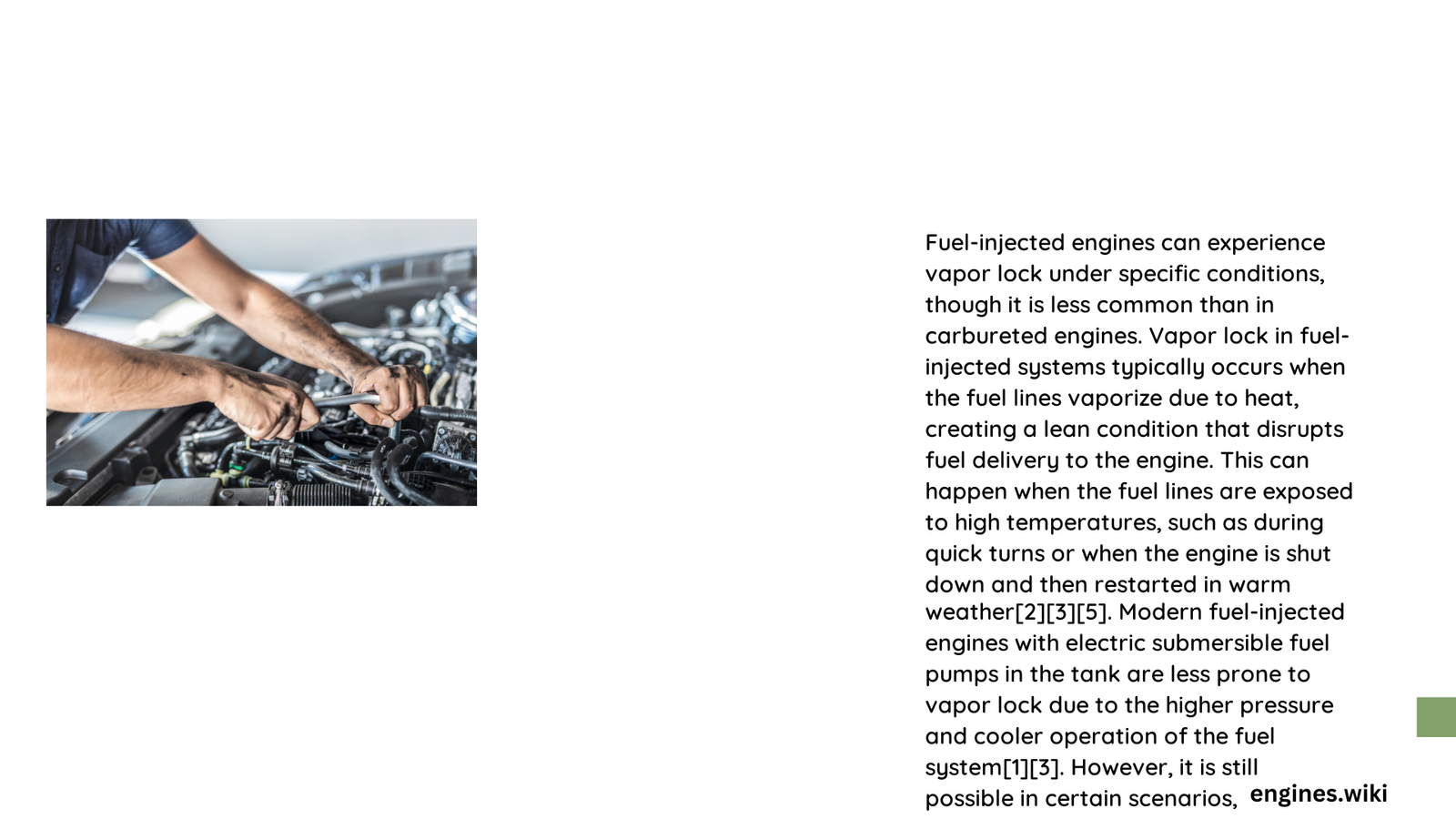Modern fuel-injected engines represent sophisticated technological systems where vapor lock remains a nuanced phenomenon. Despite advanced fuel delivery mechanisms, specific environmental and mechanical conditions can trigger this complex thermal interruption in fuel system dynamics, potentially compromising engine performance and operational reliability across various automotive platforms.\n\n## What Causes Vapor Lock in Fuel Injected Engines?\n\nVapor lock emerges from intricate thermal interactions within the fuel delivery system. Several critical factors contribute to this phenomenon:\n\n### Thermal Dynamics\n- Ambient Temperature Thresholds: Temperatures exceeding 95°F (35°C) increase vapor lock probability\n- Engine Component Heat Radiation: Proximity of fuel lines to exhaust manifolds and engine blocks\n- Fuel Volatility Characteristics: Lower boiling point fuels more susceptible to vaporization\n\n### Mechanical Vulnerability Factors\n1. Fuel line routing near heat-generating components\n2. Inadequate fuel system pressure regulation\n3. Compromised fuel pump performance\n\n## How Do Symptoms Manifest in Fuel Injected Systems?\n\n### Performance Indicators\n- Intermittent engine stalling\n- Reduced acceleration responsiveness\n- Unpredictable fuel delivery interruptions\n- Challenging cold restart conditions\n\n## Technical Diagnostic Approach\n\n| Diagnostic Parameter | Measurement Criteria | Potential Indication |\n|———————|———————|———————-|\n| Fuel Pressure | Below manufacturer specifications | Potential vapor lock risk |\n| Line Temperature | Exceeding 212°F (100°C) | High vaporization probability |\n| Fuel Volatility | Boiling point analysis | System vulnerability |\n\n## Prevention and Mitigation Strategies\n\n### Proactive Maintenance Techniques\n- Implement comprehensive thermal shielding\n- Regularly inspect fuel line routing\n- Utilize high-quality, low-volatility fuel formulations\n- Maintain optimal cooling system performance\n\n### Advanced Protective Modifications\n1. Install additional heat-resistant fuel line insulation\n2. Upgrade to high-performance fuel pumps\n3. Implement precision thermal management systems\n\n## Technical Resolution Protocols\n\nWhen vapor lock occurs, systematic diagnostic procedures become crucial:\n\n- Immediate cooling of fuel system components\n- Comprehensive pressure system evaluation\n- Detailed thermal mapping of fuel delivery infrastructure\n- Professional mechanical assessment\n\n## Cost Considerations\n\nResolution expenses vary based on specific system requirements:\n- Basic diagnostic evaluation: $100-$250\n- Component replacement: $300-$1,200\n- Comprehensive system retrofit: $800-$2,500\n\n## Conclusion\n\nUnderstanding vapor lock in fuel-injected engines demands sophisticated technical comprehension. Proactive maintenance, precise diagnostic techniques, and advanced thermal management strategies remain paramount in mitigating potential performance disruptions.\n\n### Reference:\n- SAE International Fuel Systems Research\n- Society of Automotive Engineers Technical Publications\n- National Institute of Automotive Technology Standards

